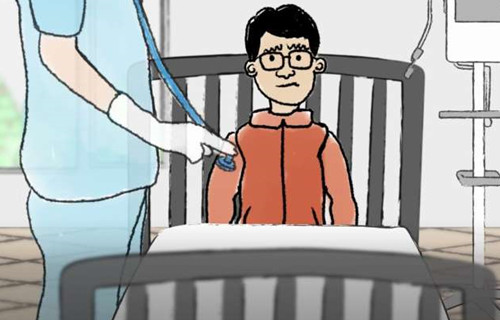导读:研究表明,圣诞老人并不会探望所有的孩子,贫穷的孩子可能不会得到圣诞老人的探望。

A new, actual scientific study proves Santa has his limits. And they’re not the laws of physics.
一项新的、实际的科学研究证明圣诞老人也有他的局限性。他们不是物理定律。
Every year on Christmas Eve, St. Nicholas delivers gifts to hundreds of millions of children around the world. But the real question isn’t how Santa manages to visit so many houses in one night, but why he consistently fails to visit so many children.
每年在圣诞节前夕,St. Nicholas会向全世界数亿孩子提供礼物。但真正的问题不是圣诞老人如何在一个晚上探访这么多房子,而是他为什么一直没有探望这么多孩子。
John Park, a physician now studying public health at Harvard University, decided to find out which kids Santa does and doesn’t visit each Christmas. In a large-scale observational study, Park decided to map out Santa visits to the UK in 2015, focusing on the children who needed holiday cheer the most: kids in hospitals.
现在在哈佛大学学习公共卫生的医生John Park,决定查明每个圣诞老人会和不会探望哪些孩子。在一项大规模的观察性研究中,Park决定记录圣诞老人于2015在英国的探访足迹,重点放在最需要节日祝福的孩子们身上:医院里的孩子们。
His study was inspired by a childhood bout of sickness that left him hospitalized on Christmas. He got to experience the thrill of a visit from Santa—but he now knows many other ill children are not so lucky.
他的研究灵感来自一个童年的一次发病,这一疾病使他在医院度过圣诞节。他为圣诞老人探望而感到激动——但他现在知道很多其他生病的孩子不是这么幸运。
Park and a few colleagues called nearly 200 hospitals with pediatric wards around the UK, asking staff who worked last Christmas whether anyone in the garb of Santa Claus had made a visit. Then they did a statistical analyses of which factors may have influenced his appearance.
Park和几个同事在英国探访了近200家拥有儿童病房的医院,询问了在上一个圣诞节工作的医护人员是否有人穿着圣诞老人的服装上去过医院。然后他们统计分析哪些因素可能影响他的出现。
The first thing they discovered is that Santa didn’t appear to care which kids were naughty or nice—there was no correlation between his visits and nice-ness.
他们的第一个发现是,圣诞老人似乎并不关心哪些孩子淘气或听话——他探望孩子和孩子听话之间没有相关性。
Then they measured whether distance from the North Pole made a difference. It didn’t.
然后他们测量医院与北极的距离是否会有所不同。结果表明没有。
Finally, they compared Santa visitations with the deprivation rating (accounting for factors like income, employment, and barrier to services) of the area where each hospital was located. There, they found a clear correlation: the children in the most deprived regions were the least likely to have gotten a visit from Santa.
最后,他们将圣诞老人的探访与每个医院所在地区的贫困比率(比如收入、就业和服务障碍等因素)进行了比较。在这一点中,他们发现了一个明确的相关性:最贫困地区的孩子最不可能得到圣诞老人的探望。
That underprivileged children receive less attention on the holidays is hardly a novel idea. But when it comes to children in hospitals, it becomes more than a question of socioeconomic privilege — it’s a matter of public health.
那些贫困的孩子在节日上得到的关注较少,这不是一个新的概念。但是,涉及到在医院的孩子时,就不仅仅是一个社会经济特权的问题——这是一个公共健康问题。
“It’s difficult to say whether a visit from Santa directly relates to improved health care benefits — probably not,” Park says. “But there certainly are elements whereby improving the environment in which care is provided certainly produces positive results in terms of health outcomes as a whole.”
“圣诞老人的直接探望与改善医疗保健福利是否有关还很难说——可能不是,”Park说。“但是,确实有一些因素改善了提供护理的环境,在整体健康结果方面肯定会产生积极的结果。”
Park says he hopes the study will point out the need to address these kinds of social disparities, whether through policy changes or through increased local volunteering, so that every child has equal opportunity to get well on Christmas.
Park说他希望这项研究能表明解决这些社会差异的需要,无论是通过政策变化还是通过增加地方志愿服务,以使每个孩子有平等的机会在圣诞节恢复健康。







